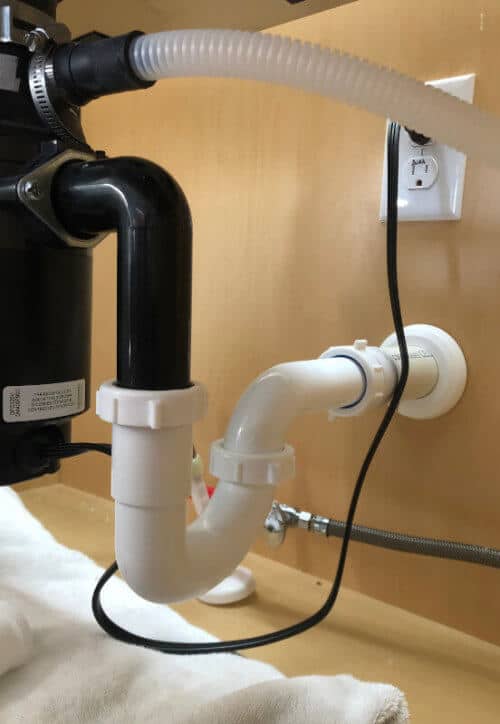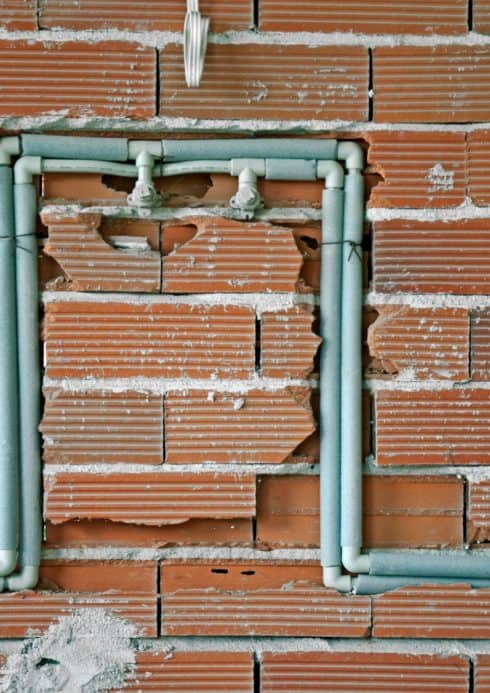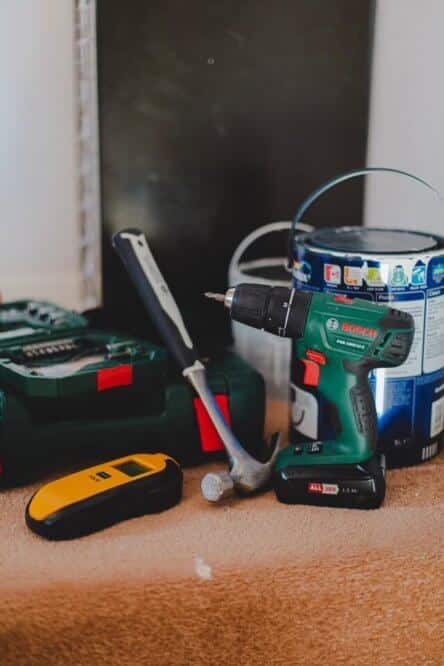If you ever had to connect a PVC pipe, you probably know how messy this process can be. This is especially true if you were using a pipe cement and a primer! Believe it or not, even connecting PVC pipe without glue is possible. Didn’t know that? You’re on the right spot!
If you want to learn more about connecting PVC pipe, here are some tips and tricks from professionals! We bet you didn’t even know half of these things could be made using PVC pipes.
Make a Clean Cut Beforehand

Whether you’re connecting PVC to iron pipe or some other material, the first step is always the same. Your PVC should be cut straight, without any uneven edges. This will keep everything together and will prevent the glued pieces from falling apart. Deburring the cut is especially important if you are doing some critical work, such as connecting plastic pipe to radiator valves. If you’re connecting PVC pipes for some DIY project, this hint isn’t as important.
Connecting PVC pipe without Glue?

As we’ve already mentioned, it is possible to connect PVC pipe without glue. This can usually be done with the help of various joints.
If you plan on making non-permanent pipe connections, this might be a great idea. On such connections, using glue is a waste of material and time.
Sure, if you’re planning on connecting PVC drain pipe, glue should always be the way to go. PVC pipes that are connected with joints usually can’t carry gases or liquids.
One of the ways to connect PVC pipes without glue is to push the two parts together simply. This is a suitable method if the parts are compatible, but this is often not the case.
Still, if you require a temporary method, this might be good enough for a start.
When you’re connecting PVC to threaded galvanized pipe, you might need a bit more secure connection. To do so, drill a hole onto both pipes and put a nail or a pin inside the holes. This will create a sturdy connection that won’t fall off easily. On the other side, when you want to remove the connection, simply remove the nail, and the pipes are separated.
Or, if you’d like, you can always buy some of the push-on fittings for PVC pipes. These fittings are easy to install and are more durable than any other glue-less method. Some of the push-on fittings are so well sealed that they can be used for transporting gasses!
Extend a Downspout with a PVC Pipe

Do you have a downspout that needs to be extended? No worries! Did you know that you can connect PVC pipe to gutter downspout to help you dry out a soggy lawn?
Connecting 4 inch PVC pipe to a downspout can change the way you maintain your yard. You’ll need to make sure your pipe is somewhat elastic so that you can move it around easier.
- What you’ll need to do first is to mark the trench line with strings. This way, you’ll know where the pipes will go. Make sure that the end of the pipes will be someplace where the water can leak without causing damage.
- Now, dig the small trench with a shovel. This can be difficult, depending on your soil.
- Usually, it will take you some two hours to complete the digging by hand. The trench should be around 10-inches in depth. However, if you live in colder areas try digging it bellow the freezing line to avoid clogging. This is tricky, though, as the frost line is usually somewhere between 32 and 48 inches.
- The next step is to layout all the pipes and connect them with glue or with a joint. Connecting drip line to PVC pipe should always be done with a PVC cement or glue. This way, you’ll prevent leakage. Another useful trick is to connect the start of a PVC pipe to a downspout with a 90-degree elbow. Always make sure that the pipes are slightly going downwards.
- Connect PVC pipes with elbows and glue and fill the trench with soil that you’ve dug up before. If everything is done correctly, now you’ll have a beautiful yard that won’t get soaked with every rainfall.
Improve Your HVAC System

Are you working on installing a new HVAC system?
Although we would suggest calling a professional to help you out, you don’t need expensive materials. High-quality PVC pipes can be used for this task.
Connecting plastic pipe to radiator valves might not sound like a good idea. However, we ensure it is perfectly safe. Connecting PVC pipe to the thermostat is a common practice, and it won’t cause any issues in the long run.
Usually, you won’t need any protective layers as the radiator can’t get hot enough to melt PVC. Be sure to ask your plumber for opinion beforehand, as some HVAC systems are hotter than the others.
Gluing PVC to Metal
Connecting PVC pipe to metal pipe isn’t something that you should do. We’re sure that you are tempted to try this, but PVC cement can’t create a solvent bond with the metal.
So then, is something like connecting PVC pipe to cast iron even possible? It is, but not directly.
What you’ll need for this task is a rubber seal explicitly created for this purpose. You can find these seals in well-equipped plumbing stores or at your local repairman.
Keep in mind that some plumbing codes don’t allow this kind of seals. If this is the case, don’t worry. What you need to do is cut off the junction part of the old fitting. Then, find an approved clamp that you can use to join the two pipes.
If you want to be sure you have done this step right, contact your plumber. Amateurs can do not all handy jobs, and sometimes you can cause damage to the plumbing.
Can You Connect PVC Pipe to PEX?
Even if you aren’t a plumber, you may have heard about PEX pipes. Connecting PVC pipes to PEX is possible and easy as PEX has a wide variety of components.
There are various threaded fittings created especially for PEX pipes. A lot of them are made for PVC pipes.
These threads might also help you with connecting the plastic water pipe to copper, so always have a few extra. One half of the thread is connected to the PVC, the other to PEX, and your job is done.
Of course, sometimes this process isn’t as smooth, and you will need some additional tools. Sometimes, glue might be necessary, but usually, this process can go without it. Still, if you are creating a waterproof seal, cement is recommended.
Keep in mind that every connection has a male and a female fitting. Also, the sizes of the ends must match in order for your PVC pipe to connect to a PEX pipe.
The pipes themselves can be different sizes, as long as the threads are a match. This leaves you with a lot of options, and you can hardly make a mistake.
This is an easy way to connect a PVC pipe to a pipe that is larger or smaller.
Bottom Line
PVC is a thermoplastic material that can be molded in various shapes to create durable objects. If you’ve seen those white plastic pipes that are used for plumbing and drainage – that’s PVC. Despite being plastic, PVC is durable and resistant to temperature change.
It can be connected to a lot of various materials. At the same time, PVC can be used for a lot of DIY projects. This is what makes it one of the most sought-after materials in the plumbing industry.
If you are someone who loves to do plumbing projects, or if you need to repair a pipe, don’t worry. You don’t always need to contact a plumber to help you with some pipe projects.
Whether it’s connecting PVC pipe to copper or to iron, there are many things you can do by yourself.
With just a bit of tinkering skills, you can use PVC to extend the drainage system or to improve HVAC.
Although most people think gluing PVC pipes is a necessity, we can see that this isn’t exactly the case. Many things can be done without using PVC glue.
Of course, more severe plumbing works require professional help. Plumbers didn’t spend years, maybe even decades, practicing their profession for nothing.
Still, if you are someone who is trying to get into this business, we hope you have learned something new from this article.
Also, if there is some urgent repair needed, now you know what you can and what you shouldn’t do. This might save a portion of your house while you wait for a plumber to arrive.

Michael Davis is a heating & plumbing expert who currently works as independent contractor in SC. He also writes for Plumbertip.
For almost 10 years he worked on various plumbing tasks across South Carolina.



